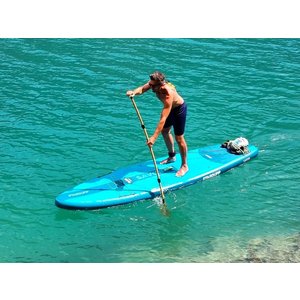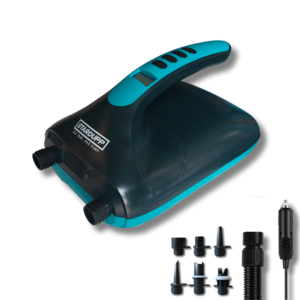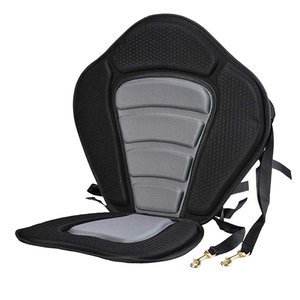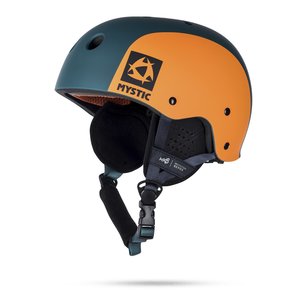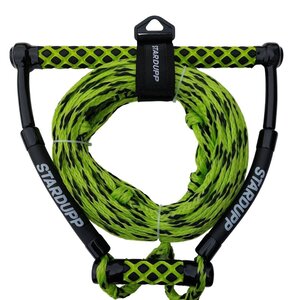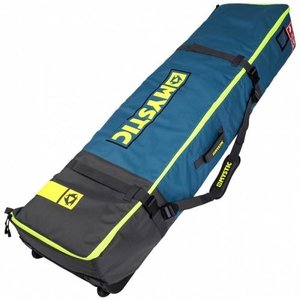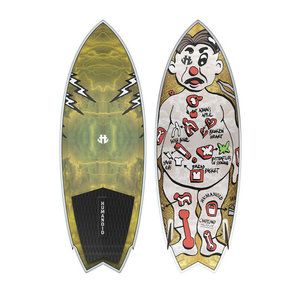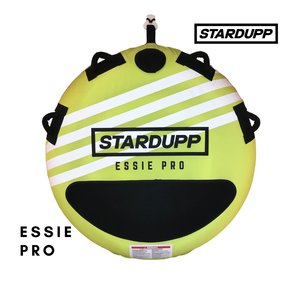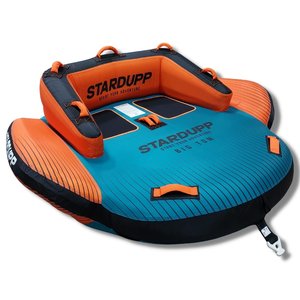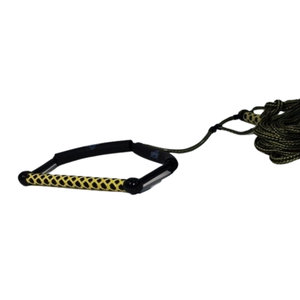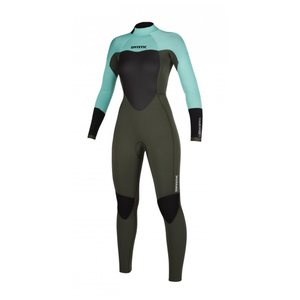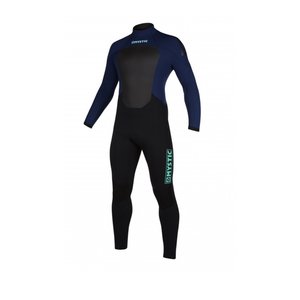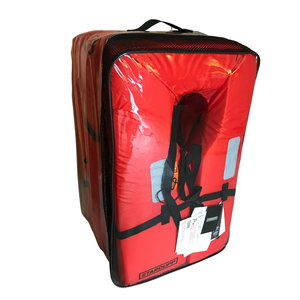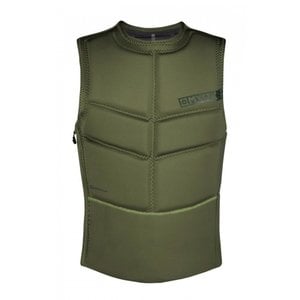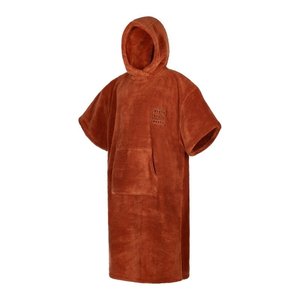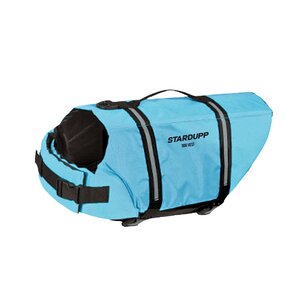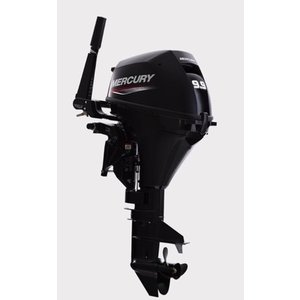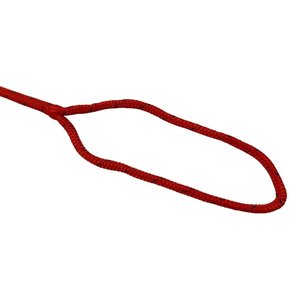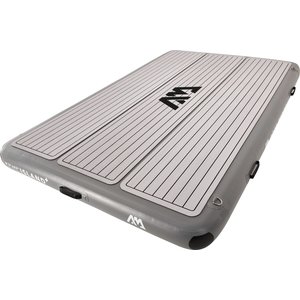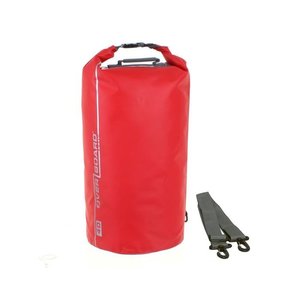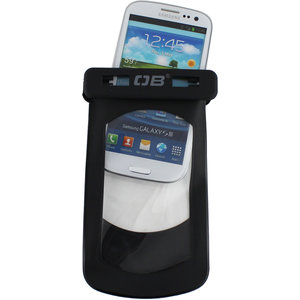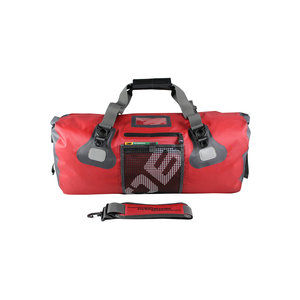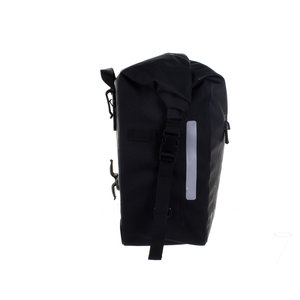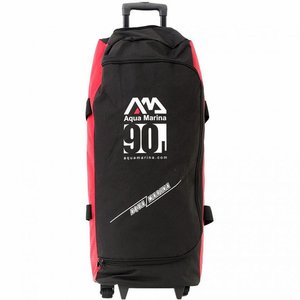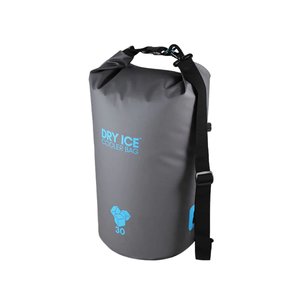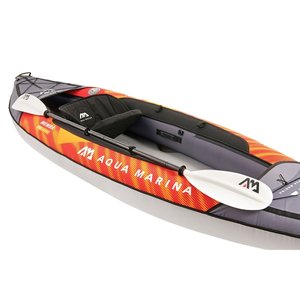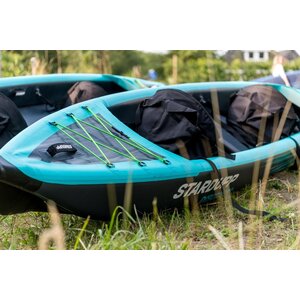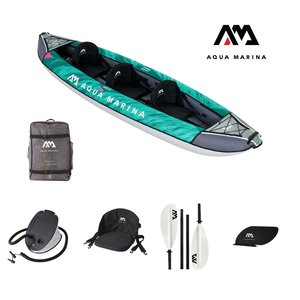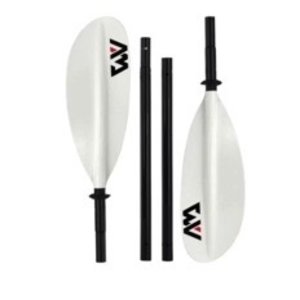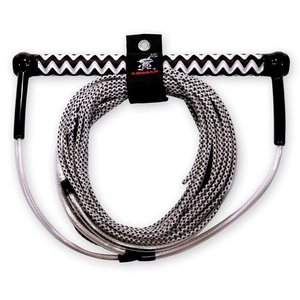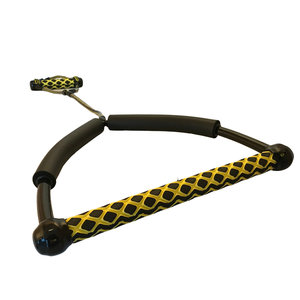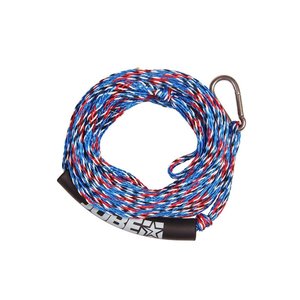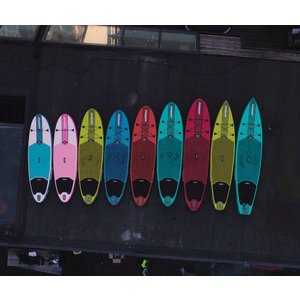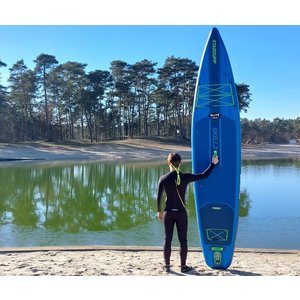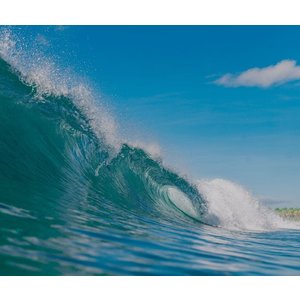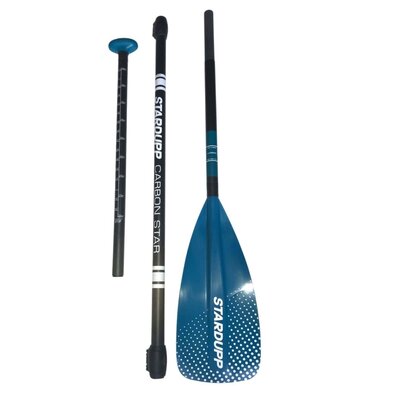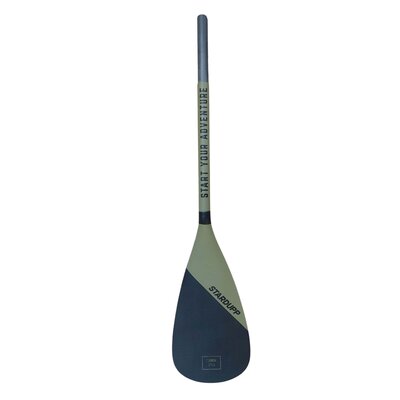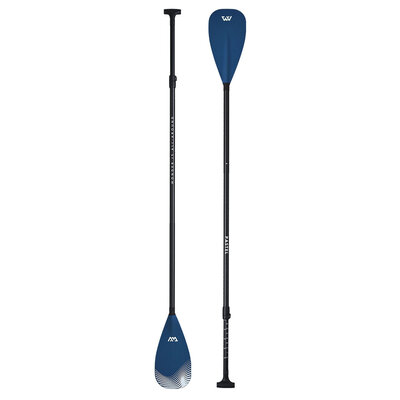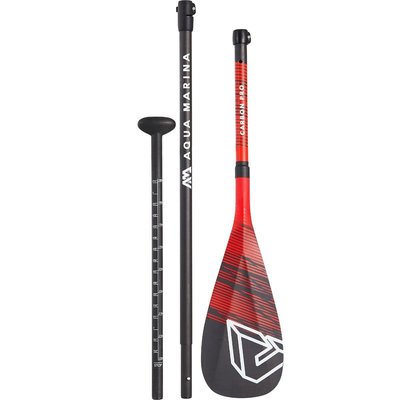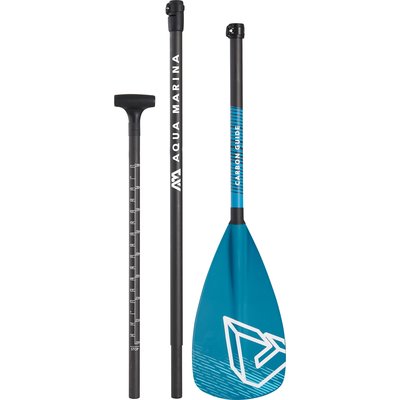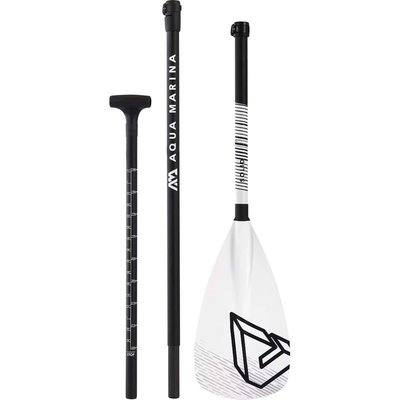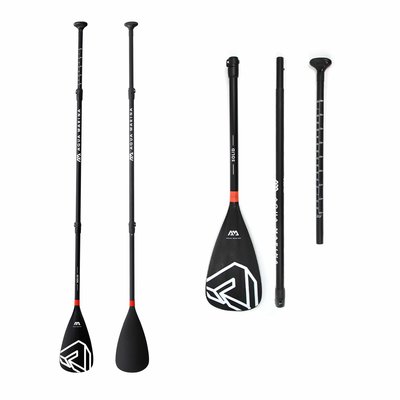Materials of SUP paddles
The material of a SUP paddle greatly affects its weight and stiffness. For instance, a lighter paddle like one made from carbon is generally more enjoyable as it demands less effort with each stroke. The stiffness of the paddle determines how much it flexes when in contact with water—a stiffer paddle means less energy and power lost with each stroke.
Aluminium SUP paddle
An aluminum SUP paddle is relatively lightweight yet durable, making it an excellent choice for beginners. Although aluminum is heavier compared to materials like fiberglass or carbon, it's robust and can withstand a lot. Most SUP boards come standard with an aluminum paddle, making it a solid starting point for new paddlers.
Fiberglass or carbon SUP paddles
SUP paddles made from a blend of fiberglass and carbon are lighter and more durable than those made solely from aluminum. The mix is often specified, for example, "Carbon 45," indicating that the paddle is made up of 45% carbon and 55% fiberglass. The higher the carbon content, the stiffer and lighter the paddle, enhancing the overall paddling experience.
Carbon SUP paddle
Carbon is considered the premium material for SUP paddles due to its strength and lightness. A carbon paddle reduces arm fatigue, allowing you to cover longer distances more comfortably. If you're a beginner, starting with an aluminum SUP paddle is fine. However, for those who are more experienced and ready to advance their paddling skills, opting for a carbon SUP paddle is advisable. The greater the carbon content, the better the performance and durability of the paddle, making it a worthwhile investment for frequent paddlers.
Choose the perfect length of your SUP paddle
The right length of your SUP paddle is key to generating sufficient power and minimizing injury risk. The ideal paddle length varies by activity:
- For wave surfing: add 15-20 cm to your height.
- For all-around SUPing: add 18-23 cm.
- For racing: add 21-26 cm.










